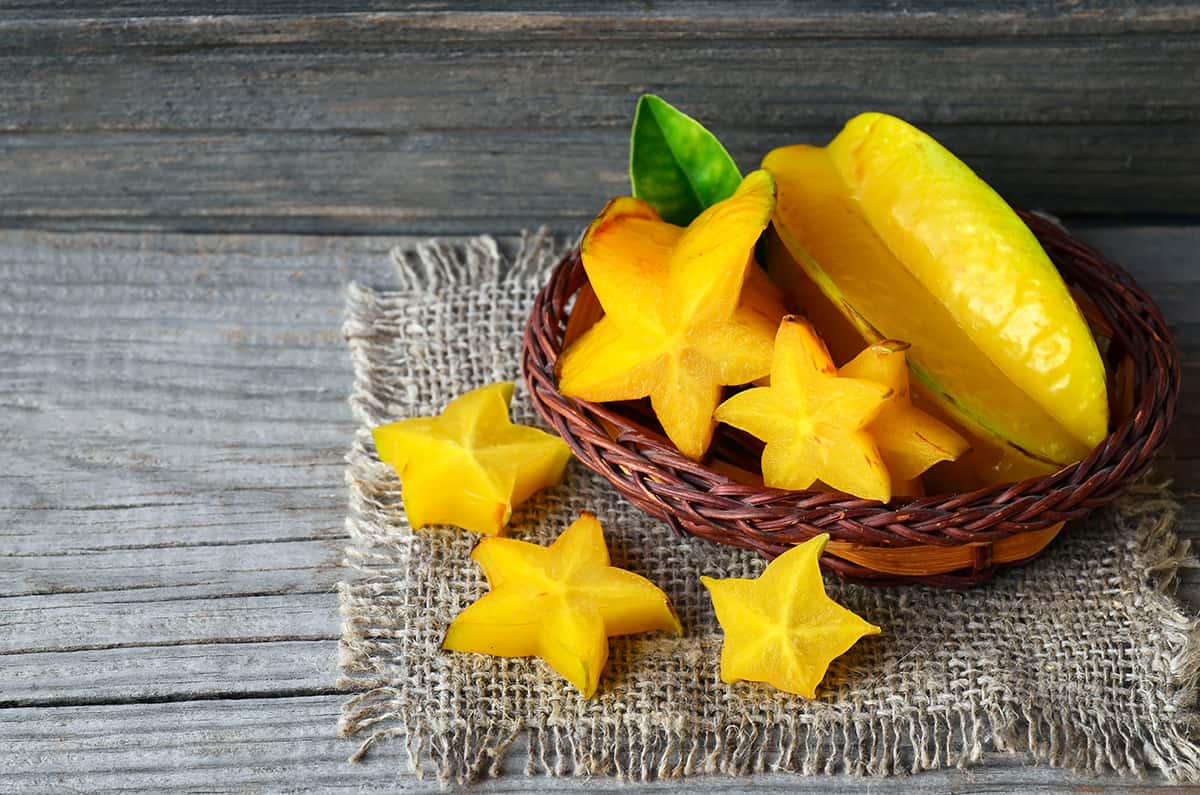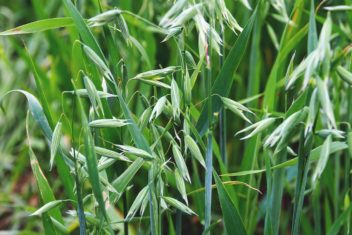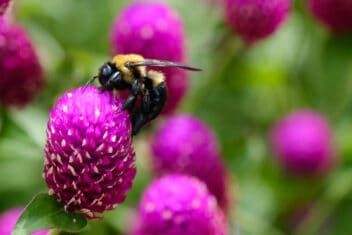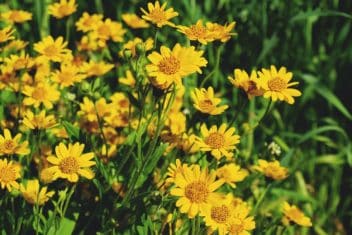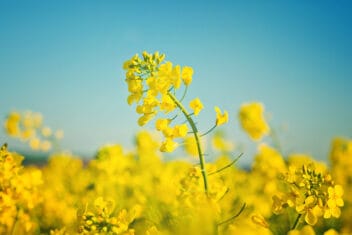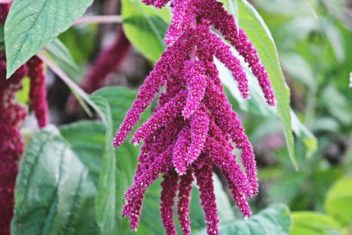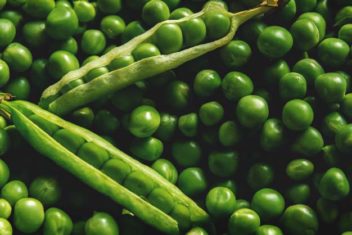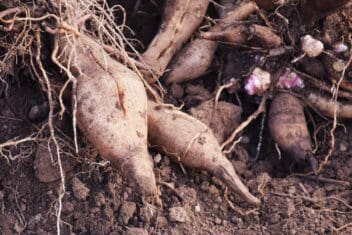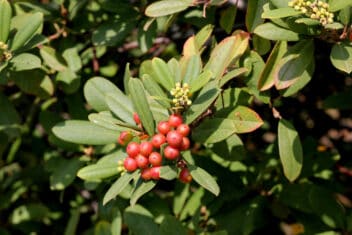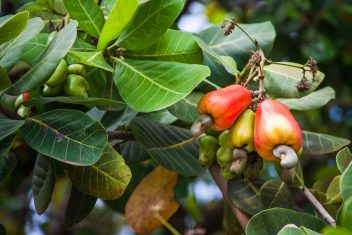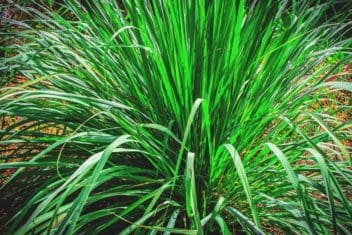More gardeners than ever are interested in trying out exotic fruits in their home orchards. If you want to try growing starfruit trees, it’s an exciting, delicious option to add to your yard.
Never tasted a starfruit before?
You’re missing out on a delectable treat! Starfruits are fleshy with a yellow, waxy, edible peel; the seeds are edible as well. When ripe, these fruits are sweet and full of vitamins and look like stars when sliced. That’s how the fruit got its name!
Starfruit Tree Information
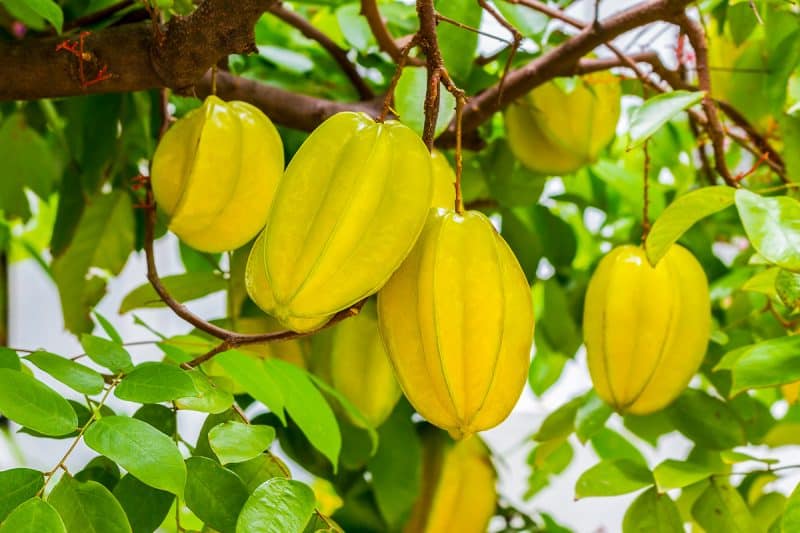

Starfruit trees, Averrhoa carambola L, originate in Southeast Asia but were introduced to Florida over 100 years ago. Some of the older varieties are tart, but the new hybrids and cultivars are known for being sweeter and more appealing for fresh eating. These new cultivars come from Thailand, Taiwan, Florida, Hawaii, and Malaysia.
Starfruit trees, also known as carambolas or star fruits, belong in subtropical and tropical regions. They’re evergreen, but if grown in cooler regions, they lose some or all of their leaves in the late winter and early spring.
Expect these trees to grow up to 20 to 30 feet tall if not pruned, so you need plenty of space to grow them. They offer plenty of shade under a multi-branched, bushy canopy.
Best Starfruit Varieties
Not all starfruits are sweet. They can range from sweet to tart, and the fruits can be small, medium, or large. Some require cross-pollinate to fruit, which means you’ll need more than one tree.
Arkin
‘Arkin’ is one of the sweetest varieties out there. It’s a self-pollinating hybrid and has medium-sized fruits with a great flavor and a juicy, crisp texture. The tree starts producing when it’s young, and the fruits turn orange when ripe.
Fwang Tung
This Thai variety is self-fertile and produces beautiful yellow fruit with a pronounced star shape. The fruits are sweet and crisp, and the tree starts producing from a young age.
Kajang
‘Kajang’ was bred in Hawaii and produces sweet, juicy, crisp fruit. This is a self-fertile variety that works well for espalier.
Kari
‘Kari’ is an abundant, self-pollinating hybrid from Hawaii. The high-quality, sweet fruit is small and has an exceptional flavor.
Lara
This hybrid from Florida has sweet fruits on a self-pollinating trees.
Planting Starfruit Trees in Your Garden
If you want to grow starfruit trees, you need to live in USDA zones 10-11; they only grow in southeastern and southwestern states and countries. However, it doesn’t tolerate salt or higher pH soils, so make sure it’s well-suited to your region.
When to Plant Starfruits
These trees grow in locations where frosts are rare, but the best time to plant a starfruit tree is in the early spring to make sure it has time to settle and establish before the hot summer months.
Where to Plant Starfruit Trees
These exotic fruit trees need to be planted in full sunlight away from other trees, buildings, or structures. They need to be planted in well-draining soil; standing water kills these trees. It’s also beneficial if the trees have some protection from the wind.
Preparing the Soil for Starfruit Trees
Ensuring that your trees have the right soil is vital if you want to grow starfruit. Compost is often mixed into the soil when planting to ensure the tree has the nutrients needed to grow.
It’s important to know your soil’s pH range, so order a test from your local county extension office or buy a soil pH test online. Starfruit trees don’t tolerate pH soils because they’re prone to chlorosis, which is the yellowing of plant tissue, in alkaline or limestone soils.
These trees prefer slightly acidic soil. If you need to amend the soil, sphagnum peat moss increases the soil’s acidity, along with wood ash. Aim for a range between 4.5 and 7 for optimal growth.
Growing Starfruits from Seeds
If you try to grow starfruit from seeds, make sure you provide plenty of warmth. They need warm soil to germinate, so it’s best to use a heating mat.
You have to keep the young trees in containers for a while before transplanting them into the soil. It takes up to three years before a starfruit tree grown from a seed is ready to be transplanted outside.
Grafting or Buy from a Local Nursery
The second option when growing starfruit trees is to graft from an existing tree. It’s possible to graft a branch onto another rootstock; this is the technique used to grow nursery stock. However, it’s best to leave this to professionals.
Instead of grafting a tree, it’s best to buy a potted tree from a nursery if you don’t want to start a tree from seed.
Planting a Starfruit Tree Outside
When the plant is two to four feet tall, it’s time to plant outside. Prepare the soil ahead of time, making sure the soil is loose to let the roots grow freely. Remove large rocks and plant the tree at the same depth that it was in the pot. It shouldn’t be planted any deeper.
Water deeply to help the roots establish in the ground.
Caring for Starfruit Trees


Once established, these trees are low maintenance and easy to grow, assuming that you provide them with the proper care. Here is how to take care of your new exotic fruit trees.
Water the Trees Regularly
These trees aren’t drought tolerant, so it’s essential to provide regular irrigation to the trees. The soil needs to be kept moist but not saturated at all times. Aim to water the tree deeply once or twice per week if it hasn’t rained.
Watering is most important from flowering through fruiting. The tree needs plenty of water to produce edible, yummy fruits that you want to enjoy.
In the winter months, reduce watering.
Fertilizing Starfruit Trees
Carambola trees are moderate to heavy feeders; they need to be fertilized four to six times per year. Young trees need to be fertilized even more frequently. It’s best to feed young trees every 30-60 days throughout the growing season for optimal growth.
When you fertilize a starfruit tree, use a 6-2-6 or 6-4-6 fertilizer when possible. Look for one that contains micronutrients like iron, zinc, manganese, and magnesium.
If your tree grows in alkaline soil, it leads to nutrient deficiencies, so you’ll need to pay special attention to regular fertilization. The tree will need regular foliar sprays to increase the iron, zinc, and manganese supplies.
Don’t Forget to Prune
Pruning is an essential part of growing starfruit trees. When your trees are one to two years old, it’s time to start pruning off branches that are longer than three feet in length. This encourages lateral growth.
The best time to prune starfruit trees is in the winter when the tree is dormant. Always check your trees each year to look for inward growing branches. Selective pruning and removing these inward-growing branches improves airflow and light to the rest of the canopy.
It’s best to prune your mature trees regularly to keep them 6-12 feet in height for easy harvesting. If the trees are any taller, you’ll need a ladder to harvest.
Common Pests & Diseases
Starfruit trees fall victim to several different pests and diseases. Here are the most common.
Scale Insects
Carambola trees are vulnerable to three different types of scale insects.
- Plumrose scales
- Philaphedra scales
- Brown scales
The best way to battle back scale insects is to use regular spraying of horticultural oils. Regular applications will reduce populations dramatically.
Weevils
Two types of weevils bother starfruit trees: diaprepes weevil (Diaprepes abbreviatus) and fruit weevils (Myctides imberbis). Diaprepes weevils damage the roots, causing the roots and shoots to die back. Fruit weevils like to eat the fruits on your trees.
No matter which type of weevils you have on your trees, both are treatable with pyrethrin that’s available at all garden nursery stores.
Stink Bugs
Most people think of stink bugs as the nasty smelling insect that invades their home, but these pests also eat small holes in fruits, allowing fungal and bacterial pathogens to enter.
You can use insecticidal soaps to get rid of stink bugs. Look at our guide on how to get rid of stink bugs.
Algal Rust
Algal rust is caused by Cephaleuros virescens, leading to rough grey or red circular patches on the bark. It causes the twigs to die back on the plant. Unfortunately, this is hard to treat, but your local extension office might have treatment options that work in your region.
Anthracnose Fruit Rot
Anthracnose fruit rot isn’t common; you can learn about anthracnose leaf spotting here.
Treating leaf spotting helps reduce the spread to the fruit, but if you don’t treat it fast enough, it destroys the fruits on your trees. A bio-fungicide that contains Bacillus subtilis or copper fungicide sprays are two effective treatment options.
Root Rot
Root rot is caused by the Pythium fungi, and it happens in overly wet soil conditions. You have to make sure the soil around your tree is able to drain off excess moisture.
Unfortunately, once infected, there is no way to cure the tree of root rot. That’s why prevention is essential.
Harvesting Starfruits
Starfruits need to be harvested from June to February. They’re sweetest when you allow them to ripen on the tree fully.
Some cultivars produce two to three crops per year, so don’t be surprised if they produce a lot of fruits when they’re fully matured! In fact, a mature tree produces 200-400 pounds of fruit per year.


Starfruits don’t ripen after they are harvested. You’ll know that it’s time to start harvesting when the grooves in the sides of the fruit are entirely yellow, with only the upper tips still green. You can wait for the upper tips to turn yellow, but their storage life dramatically decreases.
Storing Starfruits
After you harvest your starfruit, they can be stored in a sealed plastic bag in the fridge for up to three weeks. It’s best to eat them fresh, but since the trees produce large amounts, that’s not always possible.
For long-term storage, consider pureeing the starfruits and freezing them in an ice cube tray. They also dehydrate well, or you can try to make them into jams or jellies.
If you’ve ever considered growing starfruit trees but felt like it would be too difficult, this is your sign to give it a try. If you live in a region with warm enough temperatures for the trees, try growing this exotic fruit that produces hundreds of pounds of fruit each year. It’s worth the effort.
